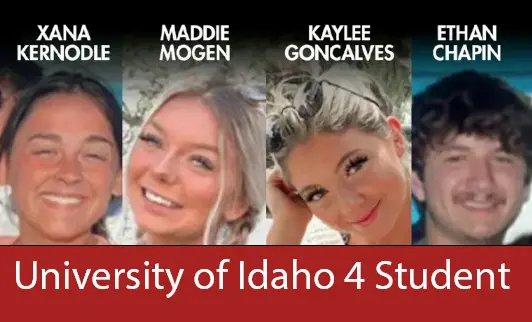Bryan Kohberger revealed to a fellow graduate student that he investigated his lineage by submitting DNA for genetic testing, which might give insight into how detectives utilized forensic genealogy to track down the suspected quadruple killer.
According to the Idaho Statesman, the Washington State University Ph.D. candidate accused of murder in the brutal murders of four University of Idaho students suggested to a classmate residing in the same on-campus housing complex in August that he took a DNA test.
Kohberger, a criminology student at the university, asked the neighbor if he could identify his ancestors, which the guy assumed were Italian, according to the student.
However, Kohberger answered that he was of German heritage.

“He mentioned his forefathers. He had some form of DNA test. I’m not sure how he got to that position. “It was really fascinating to him,” the neighbor explained to the Statesman.
The newspaper speculated that the information might put additional light on claims that officials used DNA evidence to narrowly identify Kohberger as a suspect in the grisly Nov. 13 killings in neighboring Moscow, Idaho.
According to CNN, a surveillance team that followed Kohberger to Pennsylvania presumably took DNA from the site, put it through a public database, and utilized genetic genealogy procedures to link the sample to the student through family connections.
“What most likely occurred was that the crime scene was a shambles, and there was DNA evidence all over the place,” Pete Yachmetz, a security consultant and former FBI agent, recently told The Washington Post. “So they gathered and processed all of the DNA evidence they could find.”

Using the approach, detectives first identify the victims’ DNA and then “start hunting for DNA of someone who shouldn’t have been there,” he explained.
DNA samples from investigations such as the Idaho massacre are frequently run through the Combined DNA Index System, or CODIS, the FBI’s national DNA database, according to Yachmetz.
According to Kohberger’s arrest record, he left the “tan leather knife sheath” of the undetermined murder weapon at the scene of the killings.
The Idaho State Lab detected male DNA on the button clasp of the sheath, which was eventually connected to the suspect when genetic evidence was recovered from the garbage outside his family’s house in Pennsylvania.
Meanwhile, the neighbor stated that Moscow cops phoned him after discovering Kohberger’s mobile number in his phone.
He said officials questioned him “how we met, what his mentality was, these types of things,” but he declined to elaborate.
The neighbor also stated that he gave the cops a snapshot of a text exchange between the two males.
The snapshot examined by the Statesman includes a phone number with an area code in eastern Washington.
“Hello (neighbor)!” “How is your semester going?” The neighbor read a text dated Sept. 21 that looked to be from Kohberger, according to the article, and stated he was too busy to respond.
Kaylee Goncalves, 21, Madison Mogen, 21, Xana Kernodle, 20, and Ethan Chapin, 20, were discovered stabbed to death in their off-campus house on Nov. 13.
